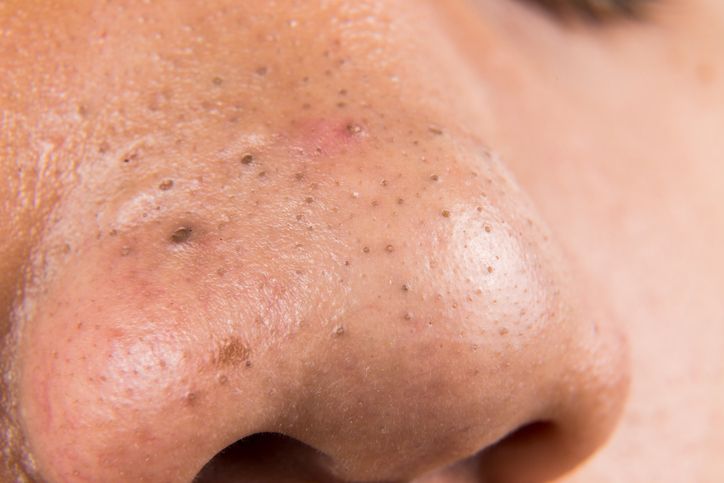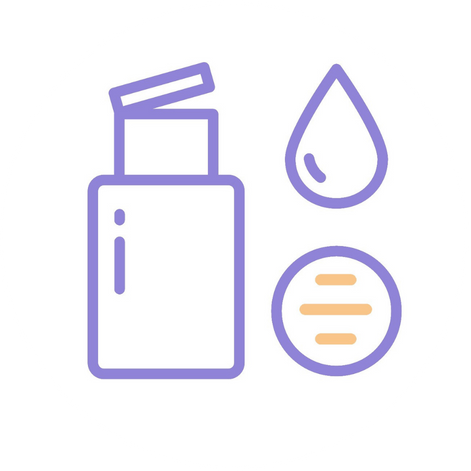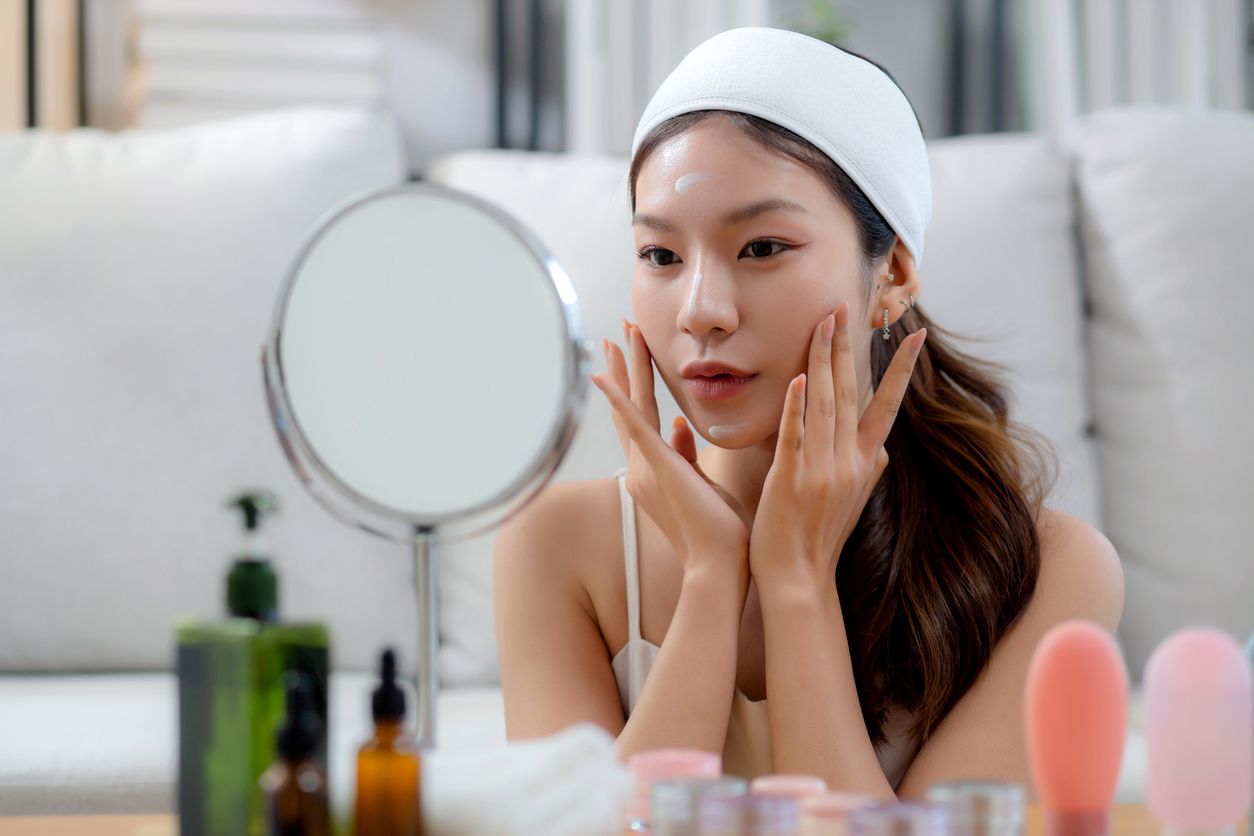- Home
- Trend
- Weight Loss Strategies
- Acne Tips
- Hair Health Information
- Blemish Removal Tips
- Acne Scar Removal Tips
- Muscle Building Techniques
- Intimate Care Tips
- Postpartum Intimate Care
- Eye Bags Wiki
- Tips for Face Slimming
- Secret of Permanent Hair Removal
- Breast Enlargement Tips
- Cure to Snoring
- Marionette Lines
- Skin-Tightening Secrets
Exfoliation is one of the most transformative steps in any skincare regimen, holding the power to revitalize dull skin, unclog pores, and reveal a radiant complexion. However, improper exfoliation can harm your skin barrier, leading to sensitivity, redness, and even breakouts. This guide will help you exfoliate effectively and safely, keeping your skin healthy and glowing.
1st Rule: Know Your Skin Type

Exfoliation is not a one-size-fits-all process. The method and frequency should be tailored to your specific skin type to avoid over-exfoliation or irritation.
The ideal frequency for exfoliation depends largely on your skin type and the products you’re using. Overdoing it can strip away essential oils and damage the outer layer, so finding the right routine is key.
Oily or Acne-Prone Skin: Exfoliate up to three times per week. Products containing salicylic acid or other BHAs can help keep pores clear without over-drying.
Dry or Sensitive Skin: Limit exfoliation to once or twice weekly. Gentle chemical exfoliants like lactic acid or enzyme-based products are preferable, as they minimize irritation.
Normal Skin: Aim for two to three times per week, alternating between physical and chemical exfoliation based on your needs.
Combination Skin: Treat different areas accordingly—exfoliate oily zones like the T-zone more frequently, while being gentler on drier areas.
2nd Rule: Choose the Right Exfoliant
Exfoliation is an essential part of any skincare regimen, but selecting the right method can significantly impact results. Each technique—chemical, physical, or a combination—has its strengths and considerations. Here's an in-depth look at how they work and which might suit your needs best.
1. Chemical Exfoliation
Chemical exfoliants are a science-backed approach to removing dead skin cells. They work by dissolving the bonds that hold dead cells together, effectively revealing fresh skin without manual scrubbing.
Alpha Hydroxy Acids (AHAs)
AHAs are water-soluble compounds, with glycolic and lactic acids being the most popular. Glycolic acid, due to its small molecular size, penetrates deeply to target dullness and uneven tone. Lactic acid, on the other hand, is gentler, making it ideal for those with dry or slightly sensitive skin. Both help hydrate and smooth the outer layer, creating a brighter complexion.
Beta Hydroxy Acids (BHAs)
BHAs such as salicylic acid, penetrate deeply into pores due to their oil-soluble nature. This makes them ideal for acne-prone or oily skin, as they can clear sebum buildup and prevent breakouts. Salicylic acid also has anti-inflammatory properties, which help calm redness and irritation often associated with acne.
Enzymes
Enzymes like papain (from papaya) or bromelain (from pineapple) are natural exfoliants perfect for sensitive skin. They gently digest the proteins in dead skin cells without causing the redness or irritation that physical exfoliants might provoke. While slower-acting, their soothing nature makes them a favorite for those who want effective yet non-irritating results.
2. Physical Exfoliation
Physical exfoliation, or manual exfoliation, involves using scrubs or tools to remove the outermost layer of dead skin cells. This method provides instant results, but it requires care to avoid damaging the skin barrier.
Scrubs with fine particles, such as sugar, oatmeal, or rice bran, are generally safer for the skin. These work effectively when applied in circular motions with light pressure. However, abrasive materials like walnut shells or pumice should be avoided, as they can create micro-tears and lead to irritation or even long-term skin damage.
Exfoliation tools, including facial brushes, konjac sponges, and exfoliating gloves, are another popular option. Brushes and gloves are particularly effective for rougher areas of the body, such as elbows and knees, while konjac sponges are gentle enough for the face.
3. Combination Exfoliants
Some products combine chemical and physical exfoliation for a dual-action approach. These formulations pair the dissolving power of acids or enzymes with the buffing action of fine particles. For instance, a scrub infused with glycolic acid can offer deeper exfoliation and quicker results.
免費體驗
Acne Treatment
1 Minute Self-Registration
Date should not be before minimal date
3rd Rule: Notice the Over-Exfoliating Signs

While exfoliation is a vital step in maintaining healthy, glowing skin, overdoing it can cause more harm than good. Over-exfoliation disrupts the skin’s natural barrier, leaving it vulnerable to redness, sensitivity, and even breakouts.
Thankfully, your skin has a way of telling you when it’s had enough. Over-exfoliation often manifests in several ways:
1. Flaky or Peeling Skin: This is a sign that the outer layer has been stripped excessively, leading to dryness and rough patches.
2. Redness and Irritation: Persistent redness or a stinging sensation may indicate that the skin barrier is compromised.
3. Increased Sensitivity: If products that normally feel fine suddenly cause discomfort, your skin might be over-exfoliated.
4. Breakouts or Small Bumps: Paradoxically, over-exfoliating can lead to more acne as the skin becomes inflamed and vulnerable to bacteria.
If you notice any of these signs, it’s essential to pause exfoliation and focus on repairing your skin barrier with soothing products like ceramide-based moisturizers and hydrating serums.
Listening to Your Skin
One of the most important aspects of exfoliation is learning to read your skin’s cues. If it feels tight, looks red, or appears dull despite exfoliating, it’s likely time to scale back. On the other hand, if your skin is smooth, hydrated, and free of irritation, your routine is probably on point.
4th Rule: Use Lukewarm Water and Gentle Techniques
When it comes to exfoliating, the method you use can make a significant difference in how effective and gentle the process is on your skin. Proper preparation and application techniques are crucial to avoid irritation while maximizing the benefits of exfoliation. Here’s how to ensure your exfoliation routine is both effective and safe.
Preparation: Cleanse with Lukewarm Water
Before you begin exfoliating, it’s important to cleanse your skin thoroughly. Use lukewarm water to cleanse your face, as hot water can strip the skin’s natural oils and cold water may not open your pores effectively.
Lukewarm water helps soften the skin, which allows exfoliants to work more efficiently by loosening dead skin cells and allowing them to be removed with ease.
Application: Gentle Circular Motions
For physical exfoliation, always apply the product using gentle circular motions. The pressure should be light to avoid damaging the skin’s surface or causing irritation. Harsh scrubbing can lead to microtears in the skin, exacerbating problems like acne or inflammation.
For chemical exfoliants, such as those containing AHAs or BHAs, apply the product evenly across the skin using your fingertips or a cotton pad. Allow the chemical exfoliant to work for a few minutes before rinsing it off. Chemical exfoliators like glycolic acid or salicylic acid help dissolve dead skin cells and unclog pores without physical abrasion. Be sure to follow the product instructions and never over-apply.
Avoid Sensitive Areas
Some areas of the face are more sensitive than others, and you should treat them with extra care when exfoliating. Specifically, avoid the delicate skin around the eyes, where the skin is thinner and more prone to irritation. The same applies to areas with broken skin, rashes, or active breakouts—avoid exfoliating these areas altogether to prevent further damage or inflammation.
5th Rule: Follow Up with a Moisturizer

Exfoliation is a powerful step in any skincare routine, effectively removing dead skin cells to reveal a brighter, smoother complexion. However, this process also leaves your skin more vulnerable to moisture loss and external environmental stressors. To maximize the benefits of exfoliation and keep your skin healthy, it’s crucial to follow up with proper moisturizing and sun protection. Here’s how you can ensure your skin remains hydrated, protected, and nourished after exfoliating.
Hydrate Immediately: Apply a Rich Moisturizer
When you exfoliate, you’re essentially removing the outermost layer of dead skin cells, which can leave your skin feeling drier and more prone to irritation. To prevent this, applying a rich, nourishing moisturizer immediately after exfoliating is key. A good moisturizer helps to lock in hydration and restore the moisture balance that may have been disrupted during the exfoliation process.
Look for moisturizers that contain ingredients like hyaluronic acid, ceramides, or glycerin. Hyaluronic acid is known for its ability to attract moisture to the skin, keeping it plump and hydrated. Ceramides help to strengthen the skin’s natural barrier, preventing moisture loss and protecting the skin from external irritants. Glycerin, on the other hand, works as a humectant to draw water into the skin, maintaining long-lasting hydration.
For skin types that tend to be on the drier side, opt for richer creams or oils that offer deeper moisture and help lock in the hydration for hours. If you have oily or acne-prone skin, consider using a lightweight, non-comedogenic moisturizer that won't clog pores but still delivers essential hydration to keep the skin balanced.
Strengthen the Skin Barrier
The skin barrier, which acts as your body’s first line of defense against bacteria, pollutants, and moisture loss, is particularly vulnerable after exfoliation. Applying a moisturizer that helps to repair and strengthen this barrier is essential to maintaining your skin’s health. Ingredients such as niacinamide or panthenol are excellent choices for reinforcing the skin barrier. Niacinamide not only helps soothe the skin but also supports the production of ceramides, which are key to maintaining barrier integrity. Panthenol, or pro-vitamin B5, helps to calm and hydrate the skin, reducing the risk of irritation.
Sun Protection: Guard Against UV Damage
Exfoliating your skin makes it more vulnerable to the sun’s harmful UV rays. When dead skin cells are removed, the fresh, new skin beneath is much more sensitive to environmental damage. This increased sensitivity makes it essential to apply sun protection daily to avoid sunburn, premature aging, and the development of dark spots.
Always apply a broad-spectrum sunscreen with SPF 30 or higher after moisturizing, even on overcast days or indoors near windows. Sunscreen protects your skin from both UVA and UVB rays, which can cause damage ranging from sunburn to long-term concerns like wrinkles, hyperpigmentation, and skin cancer. If you’re planning to spend an extended period outside, reapply sunscreen every two hours, or more frequently if you’re sweating or swimming.
In addition to sunscreen, you might consider wearing protective clothing, sunglasses, and a wide-brimmed hat for extra defense against UV exposure.
免費體驗
Acne Treatment
1 Minute Self-Registration
Date should not be before minimal date
6th Rule: Complement Your Routine with Professional Treatments
While an at-home exfoliation regimen can work wonders for your skin, sometimes more stubborn concerns, such as acne, uneven skin tone, or persistent blackheads, require professional treatments for enhanced, long-lasting results. Professional exfoliation treatments, like Perfect Medical’s Acne Treatment in Hong Kong, provide advanced solutions that offer deeper, more targeted care, making them an excellent complement to your skincare routine.
What Makes Perfect Medical’s Acne Treatment Stand Out?
Perfect Medical’s Acne Treatment is a unique, non-invasive therapy designed to treat a wide range of skin concerns. This advanced treatment combines vacuum dermabrasion technology with a medical-grade hydrating essence, offering a powerful yet gentle method for exfoliating dead skin cells and unclogging pores, without the risks associated with traditional, harsher treatments.
Vacuum Dermabrasion: A Mechanical Exfoliation Tool
Vacuum dermabrasion is one of the standout features of Perfect Medical’s treatment. Unlike traditional exfoliating methods, which can sometimes irritate sensitive or acne-prone skin, this tool uses a vacuum suction to gently remove dead skin cells, excess oil, and other impurities from the skin’s surface.
The suction action also promotes blood circulation, enhancing the skin's natural healing process while preventing damage to the skin’s protective barrier. The gentle mechanical exfoliation is ideal for those looking to remove stubborn dead skin and deeply cleanse the pores without causing irritation or redness.
This method is especially effective for those dealing with acne-prone skin, where clogged pores are often the main cause of breakouts. The vacuum dermabrasion targets these blocked pores, helping to clear them out and reduce the risk of future acne flare-ups.
Hydrating Essence Infusion: Nourishing the Skin from Within
After the exfoliation process, Perfect Medical’s treatment infuses the skin with a medical-grade hydrating essence. This infusion not only helps to replenish moisture lost during the exfoliation but also nourishes the skin with essential nutrients that promote collagen repair and improve skin texture. The hydrating essence is specially formulated to target the needs of acne-prone and sensitive skin, ensuring that it remains moisturized, smooth, and plump. It also helps to calm any inflammation, making it an excellent addition to the exfoliation process.
This dual-action treatment—exfoliation combined with hydration—works wonders in restoring a youthful, clear complexion. It provides the skin with the necessary moisture to prevent dryness or peeling, which is a common side effect of traditional exfoliation methods.
Safe and Painless: Suitable for All Skin Types
One of the biggest advantages of Perfect Medical’s Acne Treatment is that it is suitable for all skin types, including sensitive and acne-prone skin. Unlike aggressive physical exfoliators or chemical peels, this treatment is safe and painless. The procedure is designed to be comfortable and relaxing, with no downtime required, making it a perfect choice for individuals with busy schedules. Whether your skin is oily, dry, or sensitive, this treatment ensures that it receives the gentle care it needs while addressing stubborn skin concerns effectively.
Why Choose a Professional Treatment?
While at-home exfoliation is highly beneficial for general skin maintenance, professional treatments don’t just offer short-term solutions. One of the biggest benefits of Perfect Medical’s Acne Treatment is that it helps prevent future breakouts and supports overall skin health. The deep exfoliation clears pores, removes impurities, and helps balance oil production. The added hydration nourishes the skin and encourages collagen production, which plays a crucial role in improving skin texture and reducing acne scars.
All in all, exfoliation is just the beginning. With consistent treatment, you can see long-lasting results, with a clearer, smoother complexion that stays healthy and radiant. Take the leap and book your appointment today—discover how easy it is to achieve smooth, radiant skin!
Acne Treatment免費體驗
Acne Treatment
1 Minute Self-Registration
Date should not be before minimal date
FAQ

1. How can I safely exfoliate my skin without causing irritation?
To safely exfoliate, choose products tailored to your skin type and avoid harsh scrubs or overuse of chemical exfoliants. For facial exfoliation, use mild over-the-counter products like a gentle AHA-based exfoliator 2–3 times a week, and always follow up with sunscreen to protect against sun damage.
2. Can benzoyl peroxide and exfoliation work together in a skincare routine?
Yes, but with caution. Benzoyl peroxide helps treat acne by reducing bacteria, while exfoliation removes build-up of dead skin and promotes new cell turnover. Use benzoyl peroxide at night and exfoliate 1–3 times weekly to avoid over-drying or irritating your skin.
3. What are the main methods of exfoliation, and which is best for sensitive skin?
The main methods are chemical exfoliation (using AHAs or BHAs) and physical exfoliation (using scrubs or tools). For sensitive skin, chemical exfoliation with mild acids or enzymes is safer than abrasive scrubs. Always use warm water to prep your skin and ensure you're gentle to prevent irritation.
4. How does regular exfoliation help reduce sun damage?
Regular exfoliation removes build-up of dead skin cells and promotes the turnover of new cells, helping to fade dark spots and uneven tone caused by sun damage. Pair exfoliation with daily sunscreen for optimal protection and brighter skin.
5. What over-the-counter products should I use for facial exfoliation if I have acne?
Look for over-the-counter products containing salicylic acid or AHAs for chemical exfoliation, as they unclog pores and reduce acne. Avoid harsh scrubs on the face, and complement your routine with benzoyl peroxide for active breakouts. Always exfoliate gently and moisturize afterward to protect your skin barrier.









